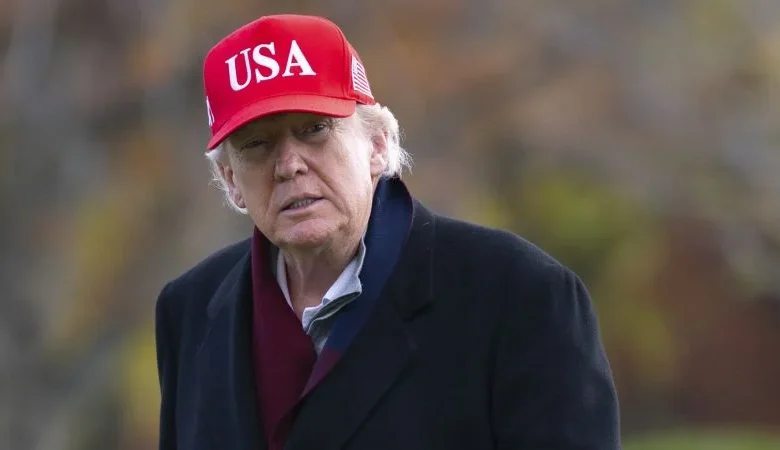Trump expected to unveil new health care cost proposal

President Donald Trump is planning to unveil a new proposal for addressing health care costs as soon as Monday, as his administration tries to avert a spike in premiums driven by the expiration of key Affordable Care Act subsidies, three people familiar with the matter told CNN.
The plan aims to fulfill Trump’s vow to deliver a better alternative to the enhanced ACA subsidies relied on by nearly 22 million people and comes after Democrats rejected measures to reopen the shuttered government for more than a month over their demand for a clean extension of those payments.
Senate Republicans agreed to hold a mid-December vote on extending the enhanced subsidies, which are set to lapse at year’s end, in exchange for extending government funding through January, spurring the effort by Trump and his aides to develop their own competing proposal. The beefed-up assistance was originally passed in 2021 as part of a Biden administration Covid-19 relief package.
If the subsidies expire, the premiums people pay are expected to more than double next year, according to KFF, a nonpartisan health policy research group. Plus, an estimated 2 million more people will be uninsured next year, the Congressional Budget Office found.
Democrats are already planning to use that predicted fallout against the GOP in next year’s midterm elections, hoping it will prove as effective as it did in the 2018 midterms, when Republicans lost control of the House in part because of their efforts to repeal the Affordable Care Act the year before.
The administration’s proposal is not final, and the timing and content could still change, the people familiar with the matter said. In a statement, a White House official said that “until President Trump makes an announcement himself, any reporting about the Administration’s healthcare positions is mere speculation.”
MS NOW first reported Trump’s plan to announce his proposal as early as Monday.
But the framework under discussion envisions temporarily extending the ACA subsidies in some form, while incorporating a series of guardrails aimed at limiting their scope — potentially including new income limits and a requirement that all enrollees pay some form of premium.
Those provisions would address two of the main critiques that Republicans have about the enhanced subsidies, including that so-called zero premium plans drive fraudulent behavior. But it would also set up the ACA for a more fundamental overhaul down the road along the lines of what Trump has been demanding in recent weeks.
Republicans have wanted to restore an income cap to the premium subsidies, which had been 400% of the federal poverty level before the enhancement took effect in 2021. The elimination of that cap made Obamacare plans more affordable for the middle class, who will be among the hardest hit if the beefed-up subsidies lapse at year’s end.
At the other end of the income scale, the proposal would mandate that everyone pay at least some monthly premium, which is aimed at addressing a wave of fraud spawned by another provision of the enhancement that allowed many lower-income Americans to obtain coverage with no premiums. Brokers and agents sought to earn commissions by enrolling people in Obamacare policies or switching them to new ones without their knowledge or consent. Requiring that lower-income enrollees pay at least some premium would be aimed at reducing the incentives and opportunities for brokers and agents to commit such actions.
The proposal is also likely to include an option for certain enrollees who choose a lower-tier insurance plan on the exchanges to redirect some federal aid into a health savings account, the people familiar said. Trump in recent weeks has repeatedly called for a plan that would divert federal funding directly to individuals to help them purchase coverage, rather sending the money to insurance companies as part of the subsidy program.
Answering Trump’s call, GOP Sens. Rick Scott of Florida and Bill Cassidy of Louisiana have rolled out proposals to allow consumers to take at least part of their federal subsidies and put the assistance in health savings accounts. Scott’s plan calls for enabling enrollees to use all the aid to buy coverage, including potentially less comprehensive and less expensive plans outside the ACA. Such a provision could greatly undermine Obamacare’s health.
Cassidy, on the other hand, wants to shift just the enhanced subsidies to HSAs and allow enrollees to use the funds to pay for health care services, such as doctors visits, prescriptions and glasses.
Meanwhile, a plan pushed by the influential Paragon Health Institute would enable lower-income enrollees to put another set of subsidies that reduce their deductibles and out-of-pocket expenses into HSAs to give them more control. Plus, it calls for Congress to once again fund these cost-sharing subsidies, which would lower certain Obamacare plans’ premiums.
Several other popular conservative policy ideas could also make it into the framework, such as provisions designed to expand the availability of non-ACA health plans, the people said.
Trump is separately expected to call on Congress to codify into law a “Most Favored Nation” drug policy. He has relied on the initiative to strike a range of voluntary deals with pharmaceutical companies aimed at lowering drug costs in the US by tying their prices to lower ones paid in peer countries.
This story has been updated with additional information.





